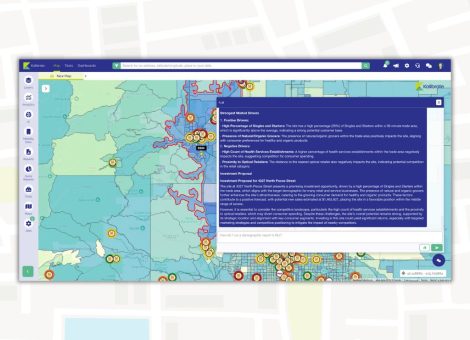The importance of human-based computation
We’ve talked at length about artificial intelligence (AI) in the fuel and convenience retail industry, and how incorporating AI into your fuel pricing strategy can boost efficiency, reduce risks and positively impact your bottom line. But notwithstanding the many benefits, AI shouldn’t be the sole consideration when adjusting your pricing tactics and even more so, your pricing strategy. A balanced and effective strategy will also make room for the right balance of emotion and experience, the human side of the equation.
This is where human-based computation comes in. While known by many names — human-assisted computation, human-behavior computation and even “the Wizard of Oz’ing” to name a few — at its core, human computation is a technique by which the machine performs its function by outsourcing certain steps to humans.
In other words, AI and machine learning are designed to do much of the work that humans can do, such as recognize images and speech, as well as solving complex predictive problems. As efficient and sophisticated as these algorithms can be, and as fast as they are evolving to handle increased complexity, there always remains pieces of work for which an efficient algorithm does not yet exist. These tasks, usually “microwork,” require some kind of human intervention, because they generally involve illogical, emotional or ethical elements that can’t be made sense of by a machine.
Why is human-based computation important to your fuel pricing strategy?
Everything a machine does is based on a logical understanding of the relationship between A and B. From very basic relationships (e.g., if the temperature increases by X degrees, I will likely sell X percent more ice cream) to more complex ones (e.g., if the temperature goes up by X degrees, and the traffic increases during rush hour, and the weather is cloudy, I will likely sell X percent more or less ice cream), these algorithms work based only on the data that is fed to them by a human.
By walking the line between art and science, human-based computation lends itself to efficient, continuous and optimal improvement. Blindly relying on computerized predictive models — without considering the specific and sometimes unpredictable dynamics of your micro-market — is a dangerous game. Likewise, making pricing decisions solely on gut feel is sure to send you into a reactive cycle that can disrupt your entire market.
That’s when a human needs to intervene. No machine can replace the creativity, experience and high-level market view held by a human pricing strategist. By understanding the limits of your AI tool and intervening at appropriate times, you can ensure that you’re making strategic, short-term pricing decisions that support your long-term goals.
Of course, this balance between science, emotion and experience will vary market to market, organization to organization and even site to site. For example, in recently deregulated markets, pricing strategists are often hesitant to incorporate AI and automation into their pricing strategy. Because these changes are so new to them, they think they’re being risk-averse with a more hands-on approach, but they often end up being too reactive and contributing to the volatility in their markets, thus creating greater risk. Unlike someone who’s been pricing for years in a mature market, their risk profile is much higher, and they could benefit from a more data-focused approach.
Pricing success depends on understanding what your AI tool can do, when human intervention makes the most sense and where the balance lies between your emotional response and whatever the data is telling you. Finding this balance takes time and experience, but it can be managed more easily by asking for help from a strategist who already has that experience.
Human-Based Computation: Combining Science, Emotion and Experience for Smarter Decision-Making
Your AI machine may do weird and wonderful things with the data you feed into it, but there’s always a human that’s interacting with that machine to ensure its effectiveness. As a pricing strategist, you have to act as “the man behind the curtain” to maintain a commanding balance between objective decisiveness and subjective experience.
As technology advances and machines are programmed to do more and more of what humans can do, a healthy mix of dynamic predictive intelligence, calculated decision making, emotional drive and experiential knowledge is key to pricing success. Let your machine learning algorithms do the work that isn’t feasible or efficient for a human to do and use the data-based insights it provides to inform your strategic decisions for maximum success.
For more on how to achieve pricing success read our E-Book: Understanding How to Achieve Fuel Pricing Mastery.
Read more articles about:
Fuel pricingSubscribe and get the latest updates
You may unsubscribe from our mailing list at any time. To understand how and why we process your data, please see our Privacy & Cookies Policy
Related posts
Location intelligence
Right-size your franchise territories: Maximize revenue per market
Franchise territory management tools are evolving changing with advances in location intelligence.

Location intelligence
AI in location intelligence: See it in action
See videos and screen captures of how AI has been integrated into the KLI platform.


